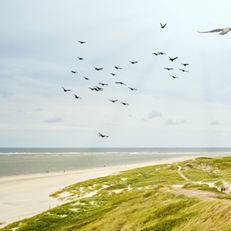The Diverse Culture of Bulgaria
The Diverse Culture of Bulgaria
Bulgarian culture is rich in tradition and influenced by various cultural streams such as Thracian, Slavic, and Byzantine cultures. For centuries, Bulgarians have been eating traditional dishes passed down from generation to generation. Bulgarians take pride in their national cuisine and delight in cooking for their guests. The culture of Bulgaria is diverse and fascinating, making it well worth exploring further.
Bulgarian Cuisine
The national dishes reflect the diverse cultural influences, from Turkish and Ottoman to German, Slavic, and Russian influences.
Appetizers
Bulgarians love salads, which is why they are always an important part of Bulgarian cuisine and almost indispensable on the table.
Shopska Salad (Шопска салата)
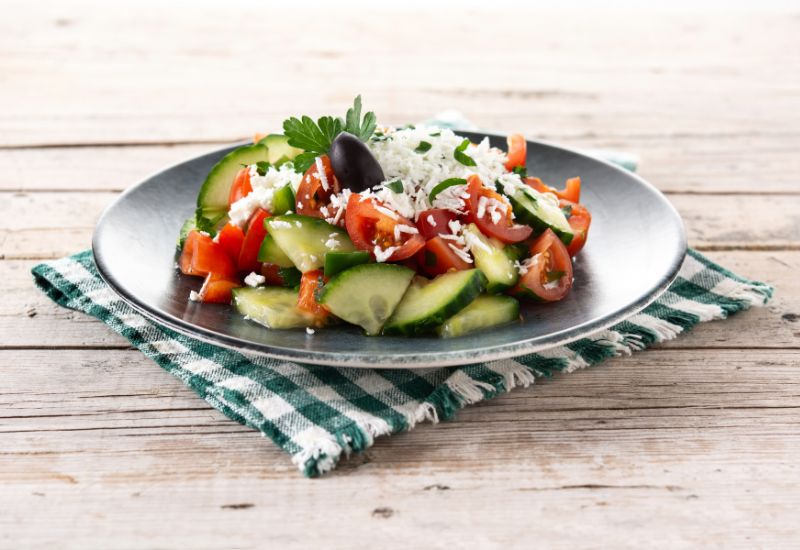
The Shopska salad is a traditional cold salad that is also considered one of Bulgaria's national dishes. The salad is often served in the summer and consists of chopped tomatoes, cucumbers, onions, roasted peppers, and Bulgarian Sirene cheese.
The salad was originally created in the 1950s to attract more tourists to the country.
Tarator (Tаратор)

Tarator is a popular cold cucumber soup in Bulgaria, especially enjoyed on hot summer days. The soup is very easy to make yourself. You only need cucumbers, yogurt, garlic, and dill.
Main dishes
Kebapche (кебапче)
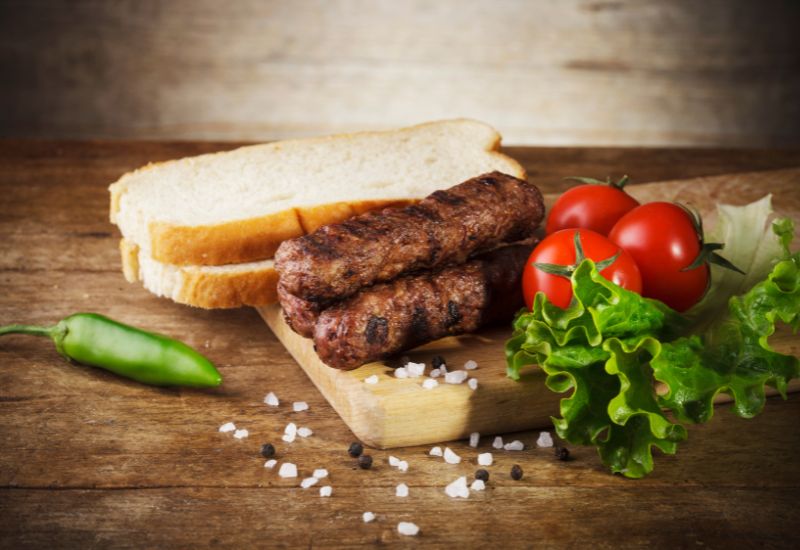
Kebapche is a popular Bulgarian dish, translated as "little kebab". The popular meat dish consists of spicy minced meat, often pork, beef, or a mixture of beef and pork. The minced meat is formed into small sausages and must be grilled.
According to historians, the dish came to Bulgaria with the Ottomans in the 14th century and has established itself as one of the many national dishes of Bulgaria.
Guvech (гювеч)
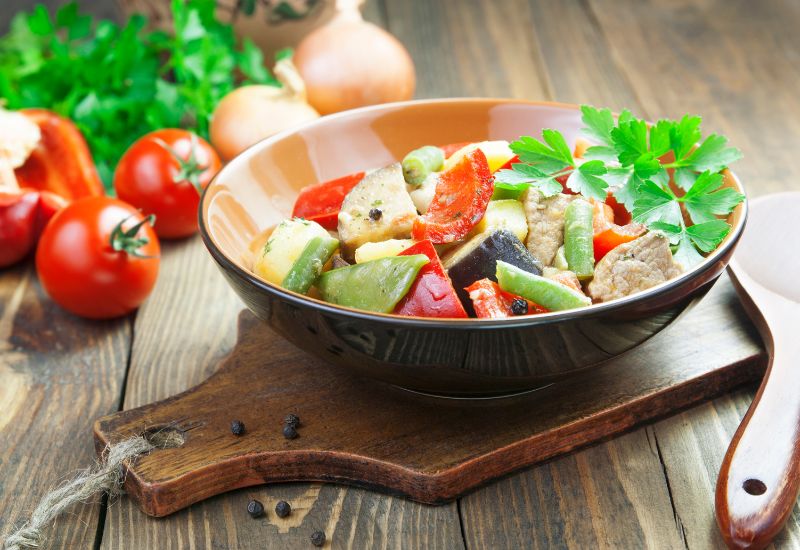
This traditional stew is typical for Balkan cuisine and is named after the clay pot in which it is prepared. The Bulgarian Guvech derives from the Turkish word güveç (clay pot) and reflects the Turkish origin of the specialty.
The stew is usually simmered for hours with seasonal vegetables, meat, and spices. Typical vegetables and meats for Guvech include potatoes, eggplants, peppers, tomatoes, onions, carrots, peas, beef, pork, chicken, or lamb.
Drinks
Rakia
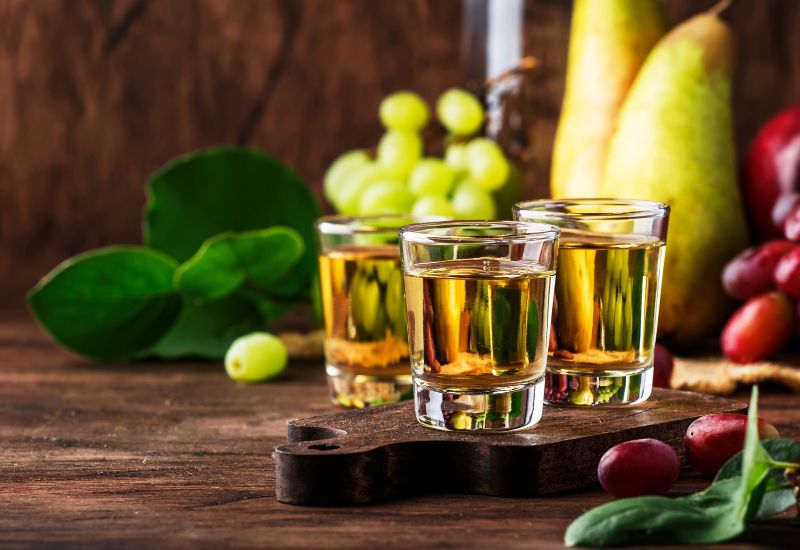
Rakia is a traditional fruit brandy and the quintessential national drink, made from various types of fruit such as plum, peach, and apricot. It is produced in most parts of the country. The drink is made by distilling must from grapes or peaches. This alcoholic beverage has a long history in Bulgaria, as it was already consumed by the Romans about 2000 years ago.
Wine
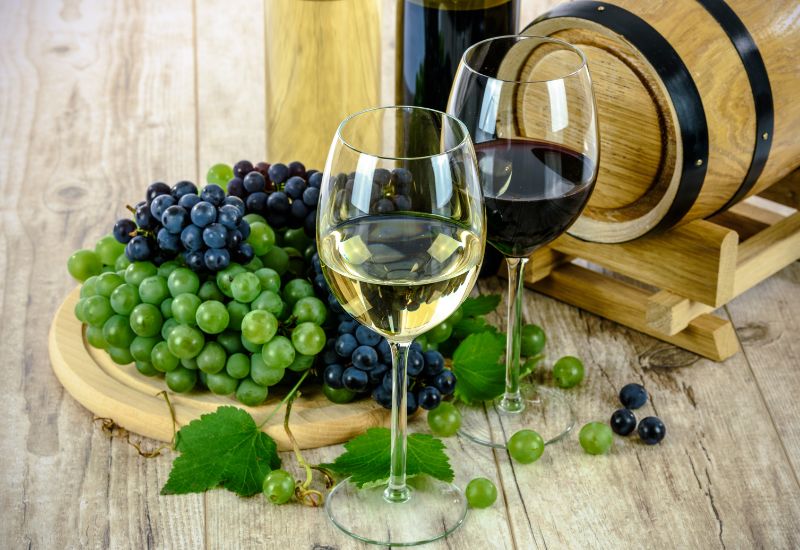
Bulgaria is an ideal place to find some of the best wines in the world. The climate, soil, and local spirits create a unique wine culture that attracts many great winemakers to come to Bulgaria to work on the Bulgarian vineyards. Especially, the Black Sea region is very popular among winemakers and tourists.
In Bulgaria, primarily red wines, but also white and dessert wines, are produced. The most common grape variety in Bulgaria comes from the Plovdiv region and is the Pamid. The red wine variety is light red and has a fresh aroma.
Traditional Festivals and Customs
In Bulgaria, festivals and customs have held an important and high status in the country for centuries, and that is precisely why Bulgarians like to celebrate their festivals thoroughly and extensively.
Kukeri Festival

When? On the first Sunday in March
The Kukeri Festival is a festival intended to bid farewell to the cold and dark winter months through dancing and to welcome spring, comparable to the carnival. The festival always takes place on the first Sunday in March. During the festival, men from a locality or neighborhood dress up as menacing animal figures. The classic Kukeri costume consists of fur masks and colorful clothes decorated with cowbells. There are no exact rules for how the costume should look, so the men are challenged to use their creativity. The classic costume, known internationally, is a wild, menacing animal, mainly made of hairy goat skin.
The purpose of the festival is to drive away evil and make room for something new and beautiful. With the noise of the cowbells and the use of garlic, paprika, and beans, evil is driven away.
Before dancing, the Kukeri go from house to house, wishing all residents of the town or village health, prosperity, and a good upcoming harvest. The festival lasts from early morning until late at night.
Martenitsa

When? Throughout March
Martenitsa is a white and red braided amulet that is given and distributed on the first of March to appease Baba Marta. Baba Marta, translated as "Grandma March," symbolizes the month of March, which is known to be very changeable. According to legend, Baba Marta is angry with her brothers January and February, big and little "Sekhko." The reason is that the brothers rummaged through her pocket and drank her wine. Each time Baba Marta remembers her brothers' deeds, the weather turns cold, bad, and uncomfortable. However, she loves them and forgives them repeatedly, which is reflected by the returning sun and its warm rays.
The colors of the braided amulets symbolize Baba Marta's red cheeks and white hair. The color red is a symbol of health, and the color white symbolizes the high age of Baba Marta.
Conclusion
Bulgaria is a beautiful country that has a lot to offer tourists. The food is a delight in itself and an indispensable part of Balkan cuisine. The wine is unique due to the vineyards and conditions by the Black Sea. The examples listed above are not all that Bulgaria has to offer its tourists and travelers.
Have you become curious and are ready to discover an impressive country?
► Book the right digital vignette for your trip to the Czech Republic right here. If you have any questions about the regulations of the e-vignette, click here.

